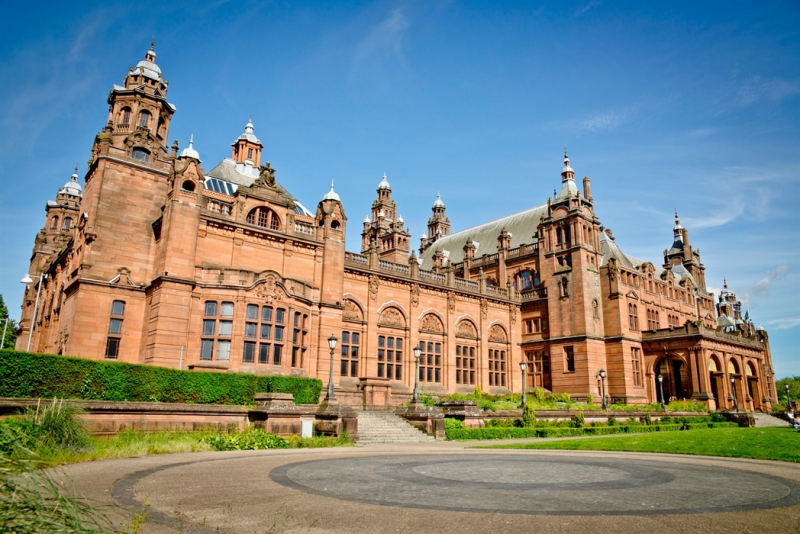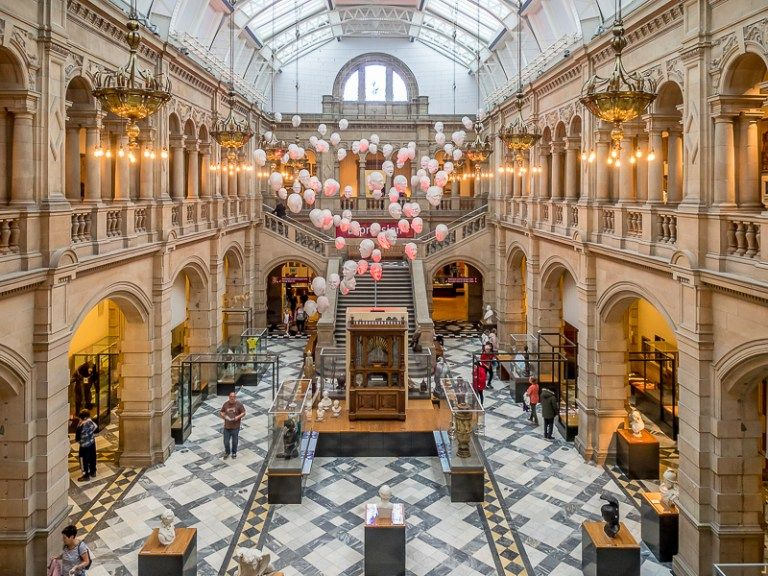Kelvingrove Art Gallery and Museum
The main point of Glasgow's 84-acre Kelvingrove Park, which was established in 1852 as a place for city people to relax, is the Kelvingrove Art Gallery and Museum, which is located in the city's center.
One of the finest art collections in Europe is located at Kelvingrove; its collection of French paintings from the 19th century includes pieces by Monet, Gauguin, and Renoir. The "Man in Armor" by Rembrandt, "Christ with the Adulteress" by Titian, and "Christ of St. John of the Cross" by Salvador Dali are further highlights. Scottish art includes works by the Glasgow Boys, the Scottish Colourists, and Charles Rennie Mackintosh.
The earnings from the 1888 International Exhibition helped to partially fund the construction of Kelvingrove. The Palace of Fine Arts, built by Sir John W. Simpson and E.J. Milner Allen, debuted in 1901 as part of the Glasgow International Exhibition. Glasgow has an urban legend that the structure was inadvertently constructed backward, and the architect jumped from one of the towers in desperation after realizing his error. The main entrance, however, was always meant to face Kelvingrove Park.
After undergoing a three-year renovation, the Kelvingrove Art Gallery and Museum reopened in 2006 and has since become one of Scotland's most well-liked tourist destinations. The museum's 22 galleries are home to a variety of displays, including Renaissance art, taxidermy, and Egyptian artifacts.
Location: Argyle Street, Glasgow G3 8AG, Scotland











